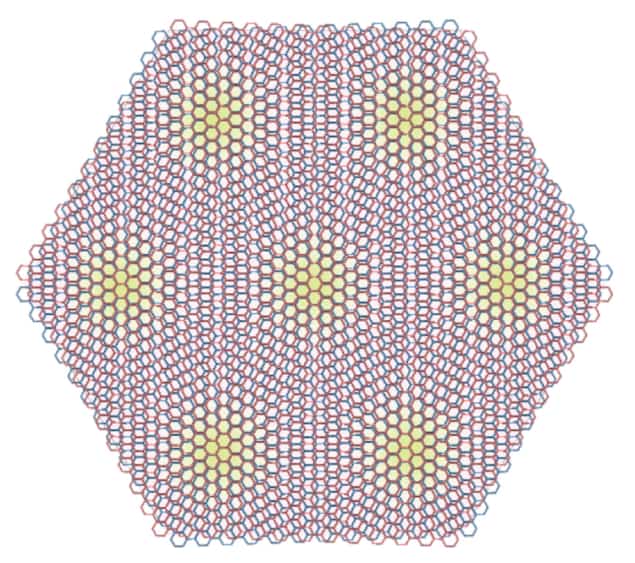
Two years ago a team of researchers at the Massachusetts Institute of Technology (MIT) in the US kicked off the field of “twistronics” by discovering that two layers of graphene offset by a small angle could support an array of insulating and superconducting electron states. This novel electronic platform, dubbed “magic-angle” graphene, heralded the beginning of a fundamentally new approach to device engineering. Now the researchers, again led by Pablo Jarillo-Herrero, have extended the “magic” twist to another graphene system: twisted bilayer-bilayer graphene, made from misaligned stacks of bilayer sheets of atom-thick carbon instead of monolayer ones. The system, which can be tuned by applying an electric field, could be used to investigate the strong electron-electron interactions that lead to phenomena such as high-temperature superconductivity and correlated quantum phases.
Jarillo-Herrero and colleagues made the first magic-angle graphene by stacking two sheets of 2D carbon on top of each other to form a moiré lattice. When they twisted these sheets so that the misalignment angle between them was 1.1°, they observed two unexpected effects. The first was that by applying a voltage, they could electrically tune the system so that it became a correlated (“Mott”) insulator. This transition to a Mott insulator occurs when electrons become localized in the moiré lattice – meaning that a material that would usually conduct electricity can no longer do so because of the strong repulsion between electrons.
The second effect they discovered was that, by further applying a small electric field (and thus adding a few extra charge carriers) to this insulator, they could tune the graphene superlattice so that it became a superconductor at 1.7 K. Both the insulating and the superconducting effects disappeared at slightly larger or smaller angle twists.
The start of twistronics
These results kick-started the field of twistronics, in which the weak coupling between different layers of 2D materials is used to manipulate their electronic properties simply by varying the angle between the layers. Following this discovery, researchers have also reported on superconductivity and Mott insulation in other similar systems, including moiré superlattices of three graphene layers on 2D boron nitride and twisted four layers of graphene.
The twisted bilayer-bilayer graphene (TBBG) studied in the latest work is conceptually similar to twisted bilayer graphene, Jarillo-Herrero explains, except that it involves four layers of graphene instead of two. In this system, the top and bottom layers remain aligned with respect to each other, and only the interface between the two middle layers is twisted.
Flat electronic bands
At twist angles of around 1 to 1.5°, TBBG possesses “flat” electronic bands in its energy spectrum where the kinetic energy of electrons is strongly suppressed. In a simple non-interacting description, this means that an electron is “dispersionless” – that is, no matter how much energy is pumped into it, it will not budge. “Correlated electron behaviour appears when we add interactions, however, and we indeed found correlated insulator states near these angles in our experiments,” study lead author Yuan Cao says. These states are highly sensitive to both the twist angle and the application of an electric field, he adds.

Researchers solve magic angle mystery
Flat bands also occur in twisted bilayer graphene and are thought to be involved in producing superconductivity in these systems, too. The difference, Jarillo-Herrero tells Physics World, is that in TBBG, “we can switch the correlated insulator states on and off by simply applying an electric field. What is more, these correlated states appear to have a distinct spin-polarized ground state compared to twisted bilayer graphene – as we found in their peculiar response to magnetic fields.”
These findings, which are detailed in Nature, make TBBG a new and handy platform for studying strongly correlated physics in external electromagnetic fields, he says. Once understood, this physics could be exploited to engineer the next generation of high-temperature superconductor and correlated quantum materials.
“Our work on TBBG demonstrates yet again how rich the behaviour of a seemingly simple superlattice made only of carbon can be,” Jarillo-Herrero adds. “Extending the electrical field tunability to other configurations of twisted graphene systems and indeed other twisted material platforms will possibly allow us to uncover further exotic quantum phases of matter in the future.”



